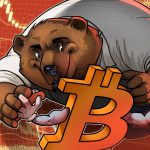The Bank of England is set to raise the interest rate on November 2nd, 2017, more than 10 years and 4 months after the previous hike. The move was well-telegraphed by the BOE since their previous meeting in October. In addition, recent economic figures support a rate rise: GDP beat expectations in Q3 with a rise of 0.4% while inflation reached the top of the range at 3%.
The big question remains: is this a one-off, undoing the post-Brexit rate cut of August 2016? Or is it the beginning of a tightening cycle.
Given the recent moves in pound/dollar, the latter option seems to be the answer. GBP/USD is trading around 1.33, moving toward the upper end of the recent range: from 1.3030 to 1.3345. All in all, cable is up some 200 pips during this week. The lion’s share of the rise came before the upbeat manufacturing PMI, and cannot be attributed to it. The pound is also higher against the euro or the yen, so this clearly isn’t related to dollar weakness.
Why are markets sure that the BOE is going to deliver a hawkish hike? Well, one reason is that Mark Carney and co. cannot raise rates without justifying it with confidence about the future. So, it makes sense to expect them to be upbeat.
However, given the Brexit uncertainties, it is hard to see them extending their confidence from being positive about the economy to hinting about further rate hikes in the near future. The hike will reset the rate at 0.50%, which was the interest rate between March 2009 to August 2016. Will they raise the interest rate beyond this level in early 2018? It is hard to imagine this given how stuck Brexit negotiations are.
All in all, a “smoking gun” for further hikes is hard to imagine. It is easier to imagine over-enthusiastic pound-buying. A clear characteristic of the pound is that markets “front-run” big events either by selling or by buying the pound. In some cases, the moves are based on leaks or rumors while in other cases, the moves are totally unjustified.














Leave A Comment